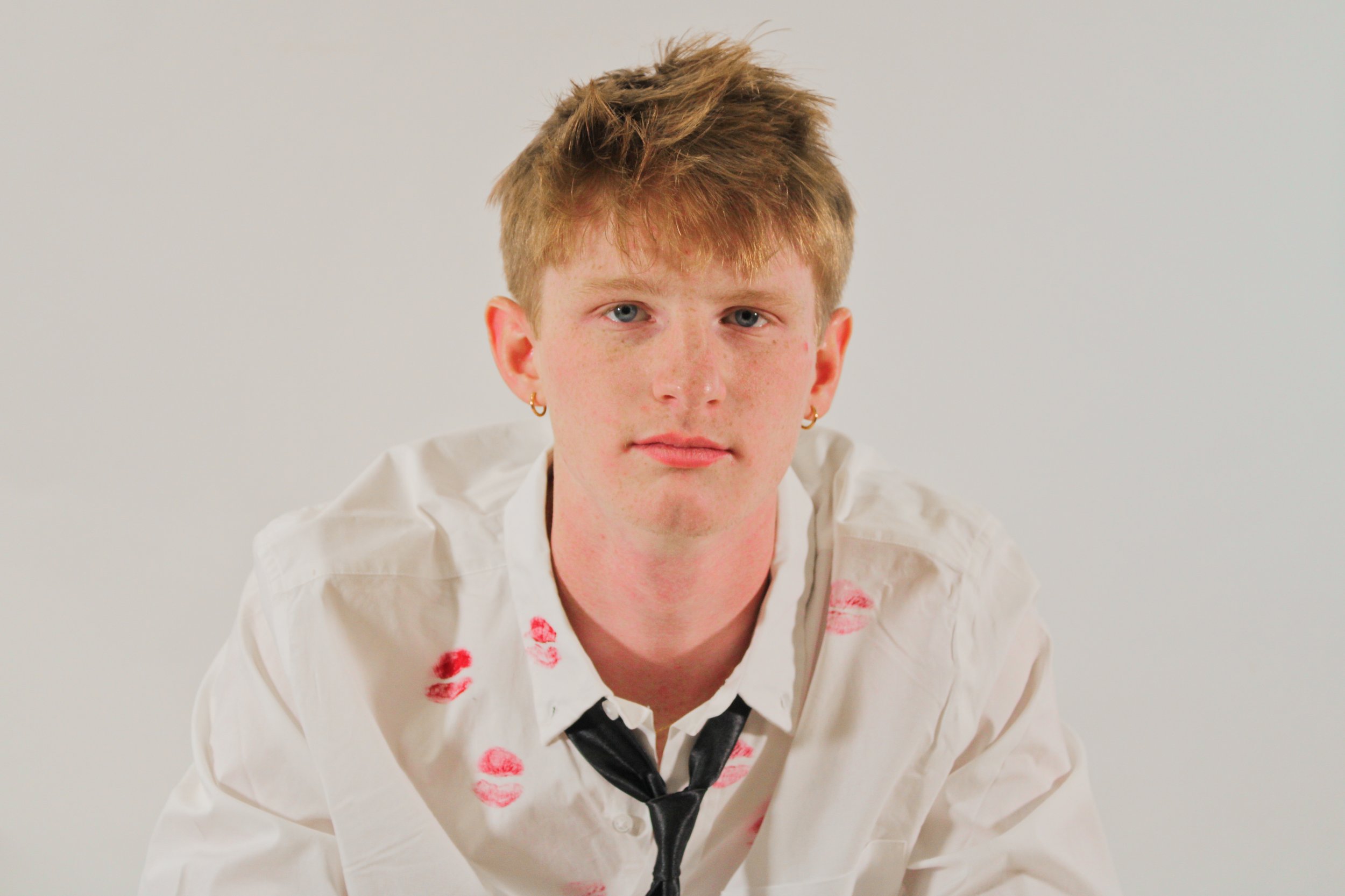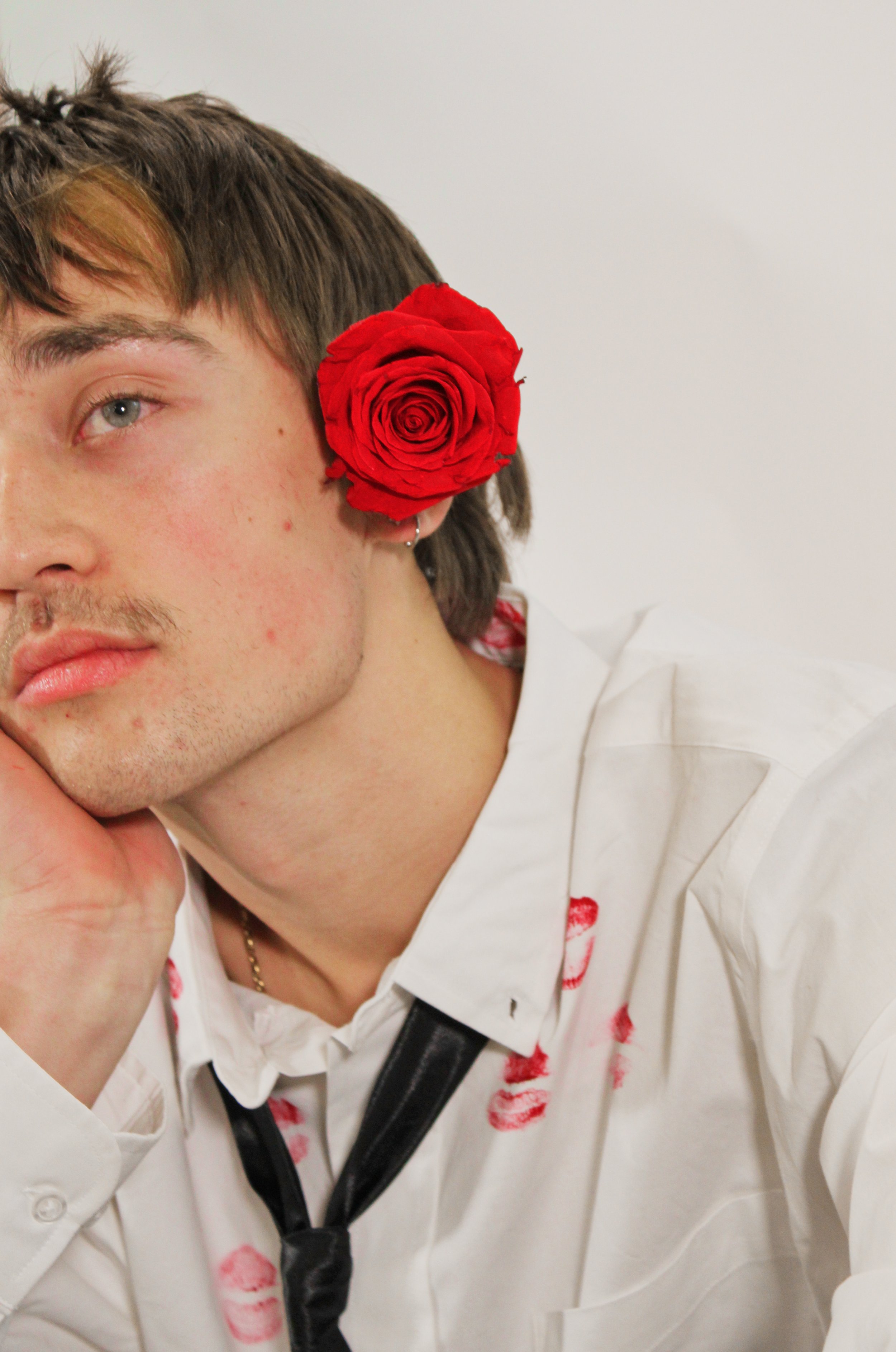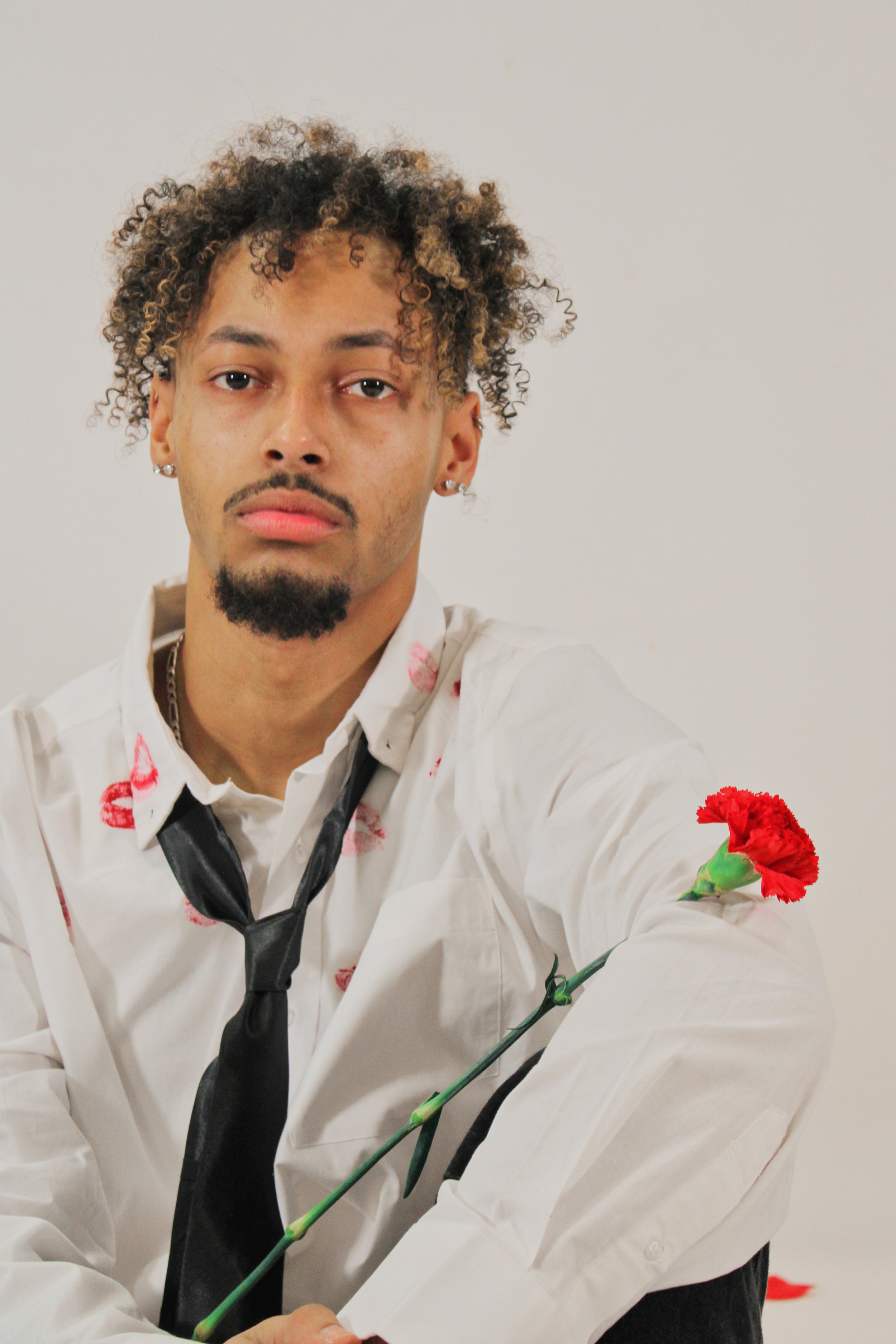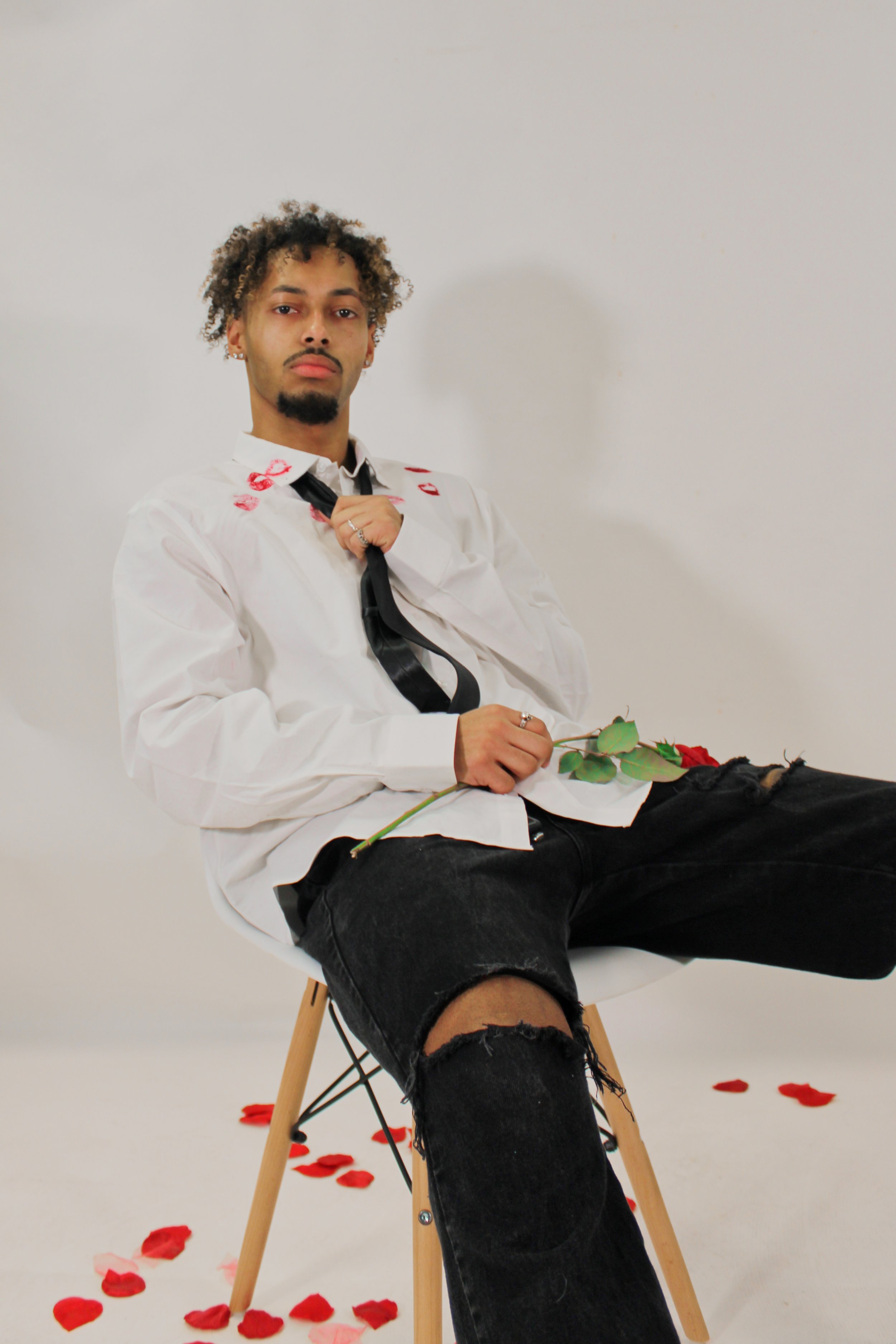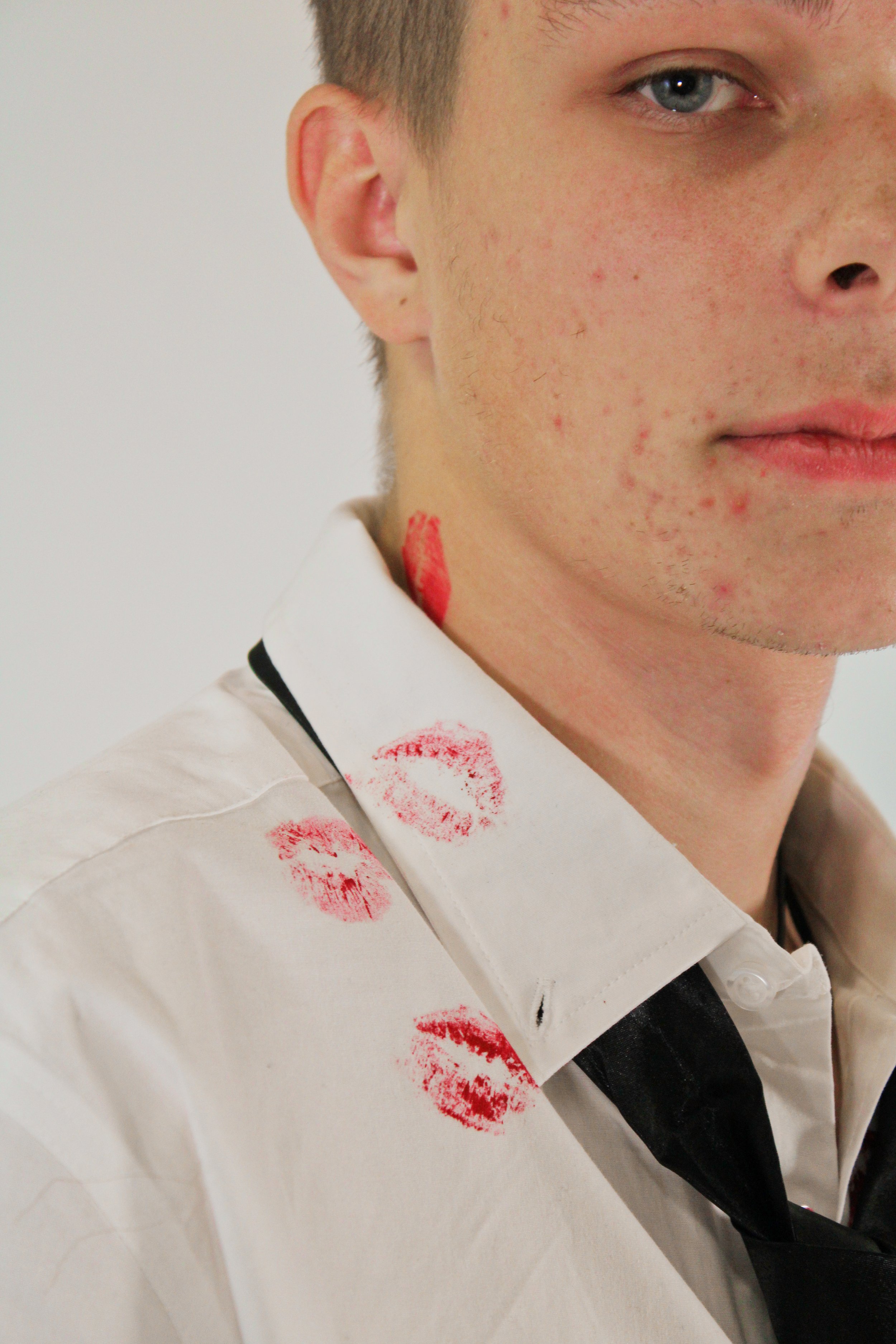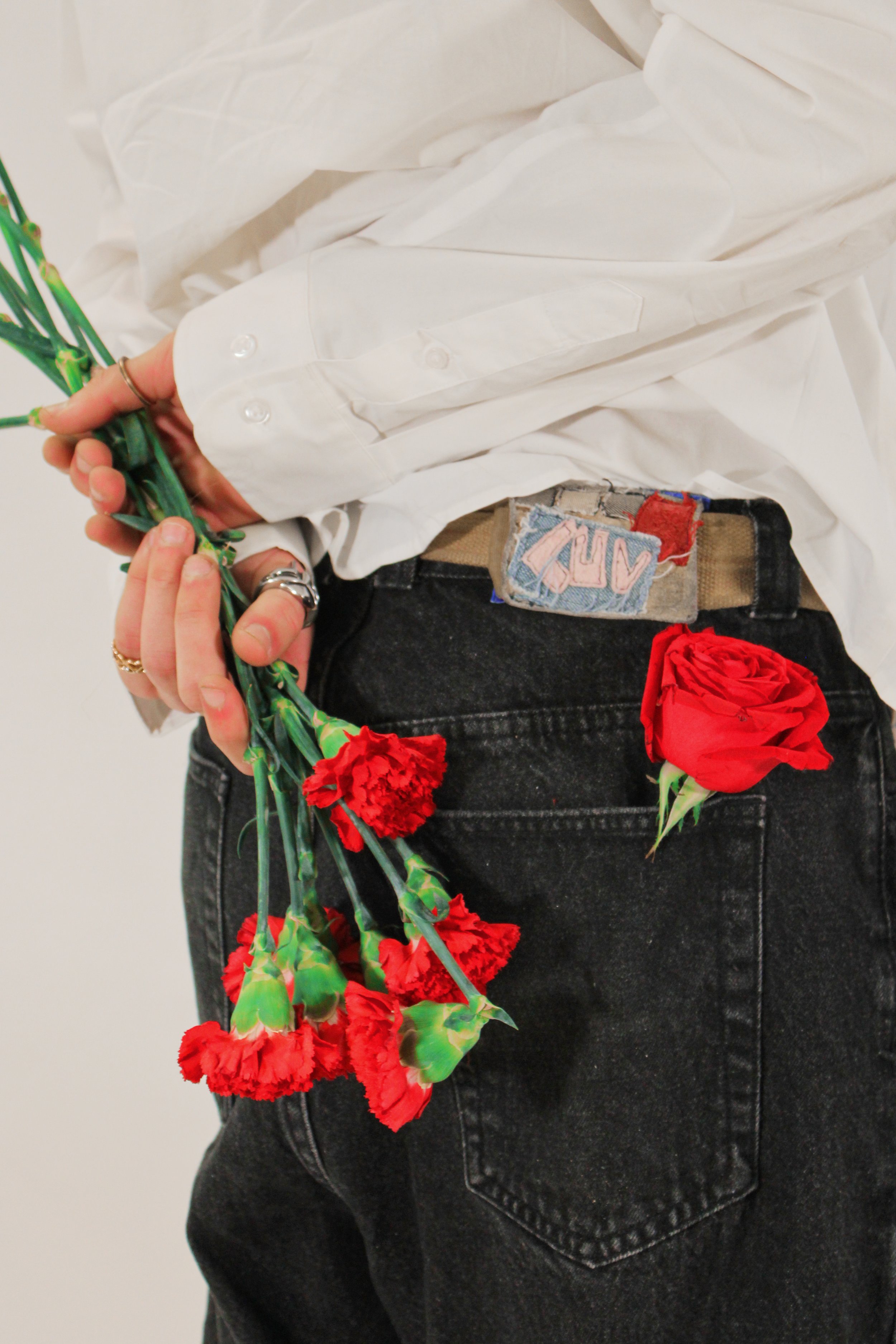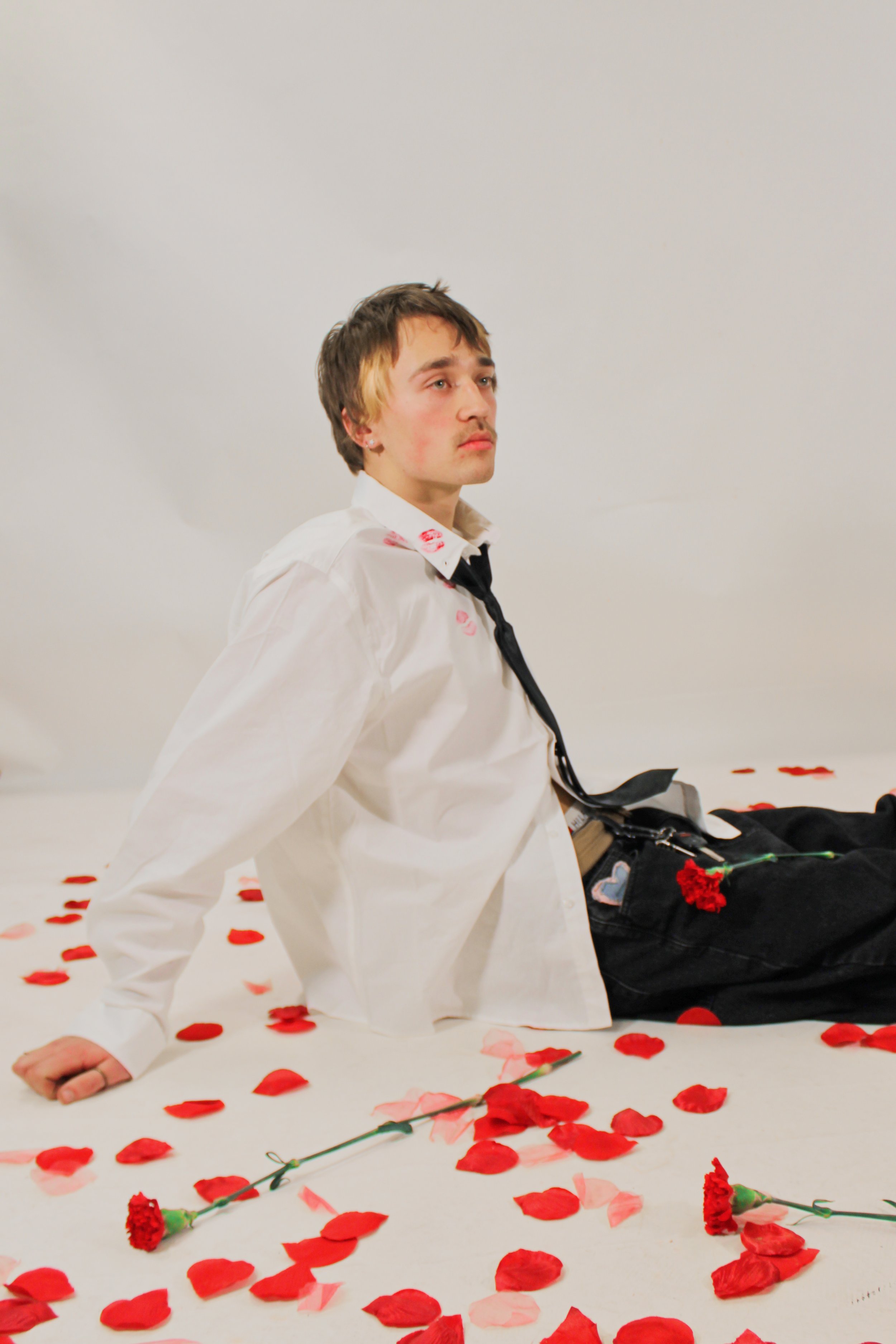The Female Gaze
Written By: Alexis Loftis
Photographed By: Britney Spangenberg
Models: Jordan Simmons, Lukas Hopkins, Gage Hamilton, Quinten Milligan (@quinten.59)
Everyone knows what the male gaze is. Its presence is inescapably felt in media, be it magazines, TV shows or advertisements. Whether or not you’ve heard of the term, its undoubtable you’ve felt its effects. Maybe you’ve sensed its glare tracking you a little too long in the grocery isle or heard its whisper in the back of your mind as you trade out that cute skirt you were excited to wear for something more conservative because it might attract the “wrong” kind of attention. Our whole society is shaped by the male gaze, and it can be very frustrating as a woman to not have our perspective represented in mainstream media.
A recent trend emerging on TikTok is using the phrase “written by a man” or “written by a woman” to describe someone's characteristics or attitude. The trend originated from people analyzing popular celebrities and then ordinary people started to make their own interpretations. Think of a James Bond type: overly macho and perpetually armed–both with his weapon of choice and an aptly-named female companion. This would be a character that people would align with being written by a man. A character written by a woman, on the other hand, could be Jack from Titanic, a very soft-spoken, artist type. People can be drawn to both archetypes but Jack had more of a cult following among women since his character was made with the female gaze in mind. He is also just a more realistic character so it's easier to sympathize and fall for him.
The term “male gaze” was conceived by Laura Mulvey, a feminist film theorist, in her 1973 essay “Visual Pleasure and Narrative Cinema.” The essay outlines how the patriarchy has had a big impact on the way we consume media and films. People are starting to recognize this idea and a new concept has been getting traction in the media: ”The Female Gaze.” This feminist theory was brought to fruition as a direct contrast to the issues the male gaze represents. The female gaze is a very new concept and is not so clearly defined. One way of looking at it is that the female gaze embraces the spectator, character, and the directors of these works and sets out to represent women as people who are capable of the same things men are. These aspects set the theory apart from the male gaze, which portrays women as objects and nothing more; it truly is about what women see.
Characters viewed through the lens of the female gaze are not charicatures. The beauty of the female gaze is that it aims to empathize rather than objectify, to show emotion and intimacy while also showing respect. This a refreshing idea compared to the control, dominance, and superficialities of the male gaze.
An example of this is the portrayal of Megan Fox’s character in the Transformers franchise versus in the movie Jennifer’s Body. Her character in Transformers was an intelligent, resourceful, strong woman--but it's hard to remember that when all the attention is being put on the way her body looks. This depiction perpetuates unhealthy beauty standards and reinforces the harmful idea that a woman's worth is based solely on her beauty. In the movie Jennifer’s Body, deeper themes surrounding Jennifer’s emotions, beauty, and sexuality are explored. Jennifer is sexually assaulted but reclaims power over her body, turns into a demon and feeds on the souls of men in the town to retain her good looks. It's a “revenge” tale, but the deeper meaning surrounds women finding their own justice and being the heroes of their own story in a male-dominated world.
Jennifer's Body premiered to overwhelmingly negative critical reception. However, over time, it garnered icon status as a dynamic piece of feminist cinema. This is because Jennifer’s Body resonates with a lot of women. In an era of film and culture that largely neglected depicting women as dimensional people, Jennifer’s Body was one of the first movies of its time to show real representation without sexualization and objectification.
When referring to the female gaze theory in film and media, three basic principles are cited. According to American director Joey Soloway, these principles can be defined as:
1) Feeling Seeing, which occurs when filmmakers make the camera subjective, they are creating a feeling of being “in” so you are understanding the character's emotions, feelings, and thoughts rather than just overlooking the character.
2) The Gazed Gaze, which is creating a sense of connection with the audience. It is what we as audience members want, how it feels to be looked upon, to be the object of one's gaze.
3) Returning the Gaze, or switching roles of the ones who were once objects, acknowledging that they have been seen as objects, and “rejecting” or “returning” that gaze. In simpler terms, dividing the aspects of desire and gaze equally among the audience and the characters.
The female gaze endeavors to see masculinity in non-traditional ways and shows that femininity is something we should all embrace. We are straying away from traditional gender roles and stereotypes as a generation. This gives us the freedom to open up more conversations about what people want in their partners. Most people just desire a person who isn't afraid to express themselves to the fullest extent. Whether its scouting out a potential partner or evaluating the media you consume, the female gaze is a tool you can utilize to see beyond the confines of patriarchy.



